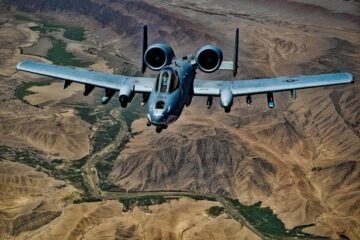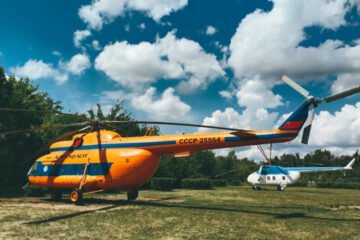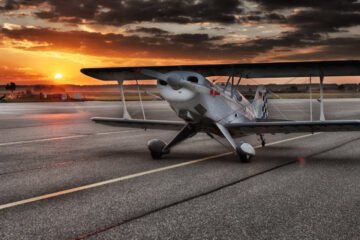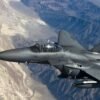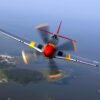
What we know about helicopters
Helicopters are among the most versatile and fascinating aircraft in the world. With their ability to hover, take off vertically, and maneuver in tight spaces, they serve a wide range of purposes, from rescue missions to luxury travel. But how much do we really know about these incredible machines? Let’s dive into the world of helicopters and explore their history, technology, and unique capabilities.
A Brief History of Helicopters
The concept of vertical flight dates back centuries, with early designs inspired by Chinese tops and Leonardo da Vinci’s “aerial screw.” However, it wasn’t until the 20th century that helicopters became a reality. In 1939, Igor Sikorsky’s VS-300 became the first successful single-main-rotor helicopter, paving the way for modern rotorcraft. Since then, helicopters have evolved dramatically, becoming indispensable in both civilian and military applications.
How Do Helicopters Work?
Helicopters are unique because of their ability to hover and fly in any direction. This is made possible by their rotor system, which consists of one or more horizontal rotors with rotating blades. Here’s a simplified breakdown of how they work:
- Main Rotor: Provides lift and thrust by spinning its blades. The angle of the blades (pitch) can be adjusted to control altitude and direction.
- Tail Rotor: Countacts the torque produced by the main rotor, preventing the helicopter from spinning uncontrollably. Some helicopters use alternative systems like NOTAR (No Tail Rotor) for the same purpose.
- Controls: Pilots use a cyclic stick (to tilt the rotor and move forward, backward, or sideways), collective pitch lever (to control altitude), and pedals (to adjust the tail rotor and yaw).
Types of Helicopters
Helicopters come in various shapes and sizes, each designed for specific tasks. Here are some common types:
- Utility Helicopters: Used for transportation, cargo lifting, and rescue missions. Examples include the Bell UH-1 Huey and the Sikorsky UH-60 Black Hawk.
- Attack Helicopters: Designed for combat, equipped with weapons and advanced targeting systems. The AH-64 Apache is a well-known example.
- Civilian Helicopters: Used for tourism, medical evacuation (air ambulances), and private travel. The Robinson R44 and Airbus H125 are popular models.
- Heavy-Lift Helicopters: Capable of carrying large loads, such as construction materials or other aircraft. The Mil Mi-26 and Sikorsky CH-53K are notable examples.
- Tiltrotor Aircraft: A hybrid between helicopters and airplanes, like the Bell Boeing V-22 Osprey, which can take off vertically and transition to forward flight.
Applications of Helicopters
Helicopters are incredibly versatile and are used in a wide range of fields:
- Search and Rescue (SAR): Helicopters can reach remote or disaster-stricken areas quickly, making them ideal for rescue missions.
- Medical Evacuation: Air ambulances transport patients to hospitals faster than ground vehicles, saving lives in critical situations.
- Military Operations: From reconnaissance to troop transport, helicopters play a crucial role in modern warfare.
- Law Enforcement: Police helicopters are used for surveillance, pursuit, and traffic monitoring.
- Tourism and Sightseeing: Helicopters offer breathtaking aerial views of landmarks and natural wonders.
- Agriculture: They are used for crop dusting and pest control in large farms.
- Offshore Operations: Helicopters transport workers and supplies to oil rigs and ships.
Advantages of Helicopters
- Vertical Takeoff and Landing (VTOL): Helicopters don’t need runways, making them ideal for urban areas and remote locations.
- Hovering Capability: They can stay stationary in the air, which is essential for rescue operations and precision tasks.
- Maneuverability: Helicopters can fly in any direction, including sideways and backward, allowing them to navigate tight spaces.
Challenges and Limitations
Despite their versatility, helicopters have some limitations:
- Speed and Range: They are generally slower and have a shorter range compared to fixed-wing aircraft.
- Complex Maintenance: Helicopters require frequent and meticulous maintenance due to their intricate rotor systems.
- Noise and Vibration: Helicopters are noisier and produce more vibrations than airplanes, which can affect passenger comfort.
The Future of Helicopters
The future of helicopters is exciting, with advancements in technology paving the way for more efficient and innovative designs. Electric and hybrid-electric helicopters are being developed to reduce emissions and noise. Autonomous helicopters are also on the horizon, with potential applications in cargo delivery and disaster response. Additionally, tiltrotor and compound helicopter designs are pushing the boundaries of speed and efficiency.
Fun Facts About Helicopters
- The fastest helicopter in the world, the Eurocopter X3, reached a speed of 293 mph (472 km/h).
- Helicopters can land on water using floats or amphibious designs.
- The longest helicopter flight lasted over 56 hours, covering 2,213 miles (3,561 km).
Final Thoughts
Helicopters are truly remarkable machines that have transformed the way we travel, work, and respond to emergencies. Their unique capabilities make them indispensable in a variety of fields, and ongoing innovations promise an even brighter future for rotorcraft. Whether you’re marveling at their engineering or benefiting from their services, helicopters continue to captivate and inspire.
What’s your favorite helicopter fact or experience? Share your thoughts in the comments below! 🚁


